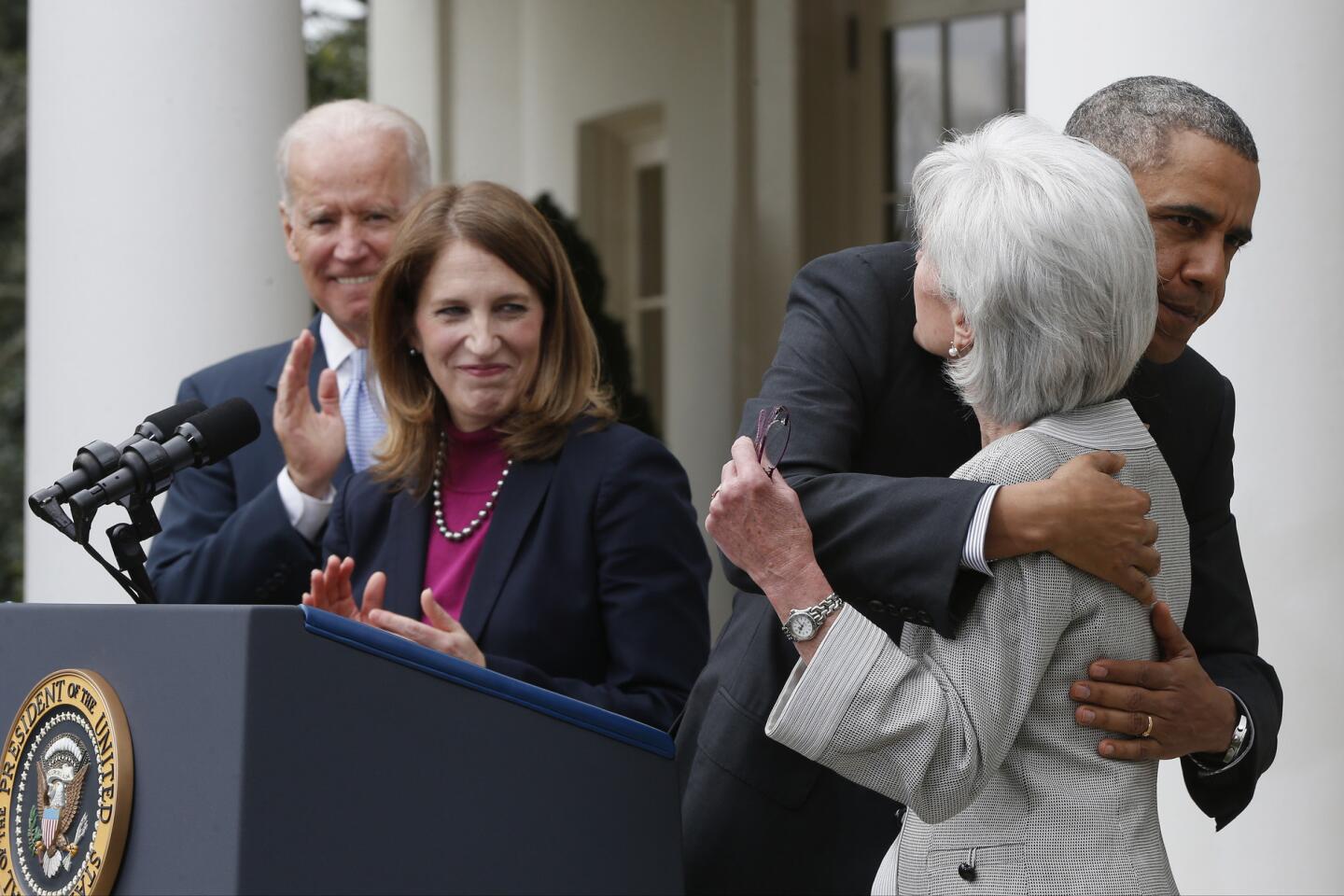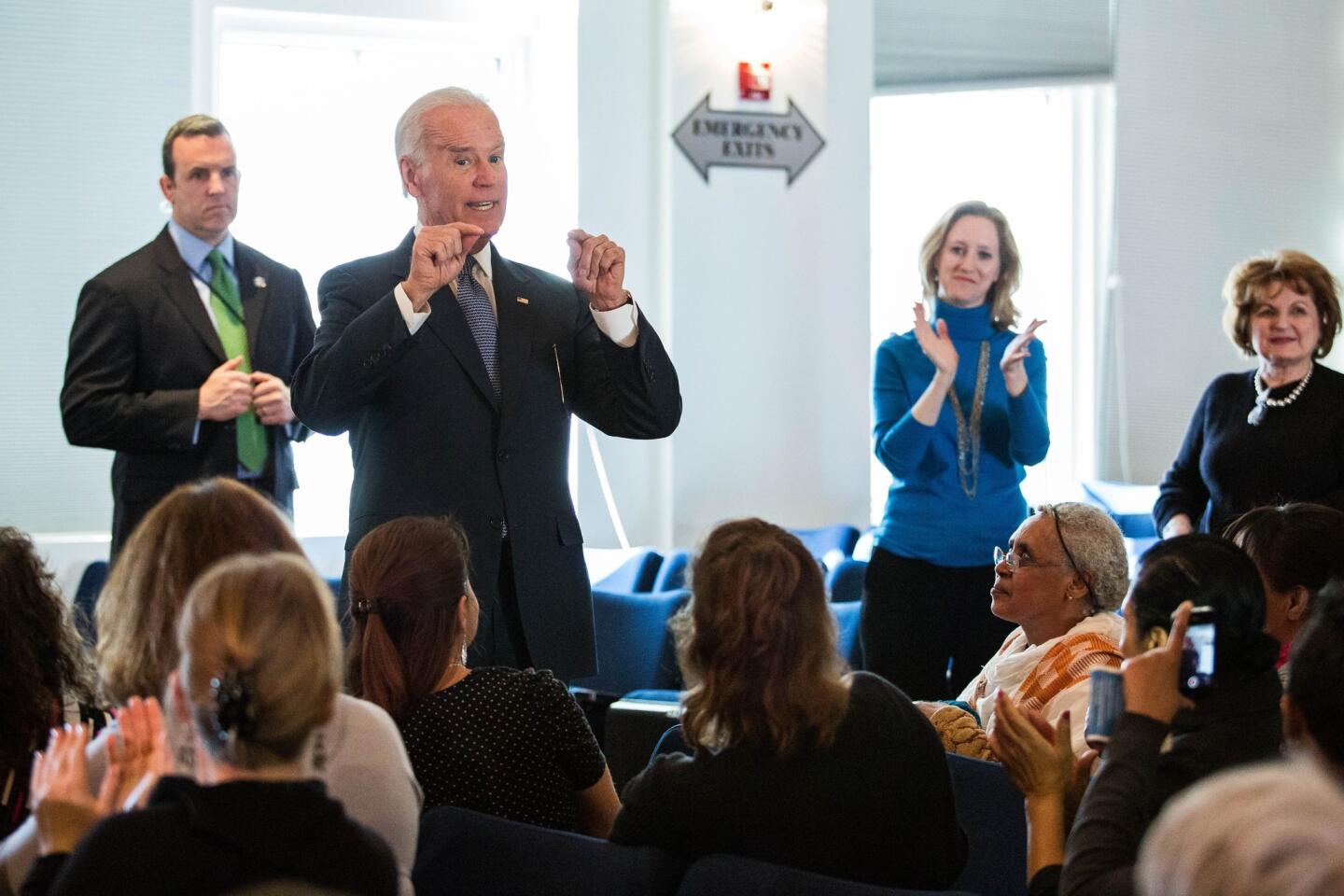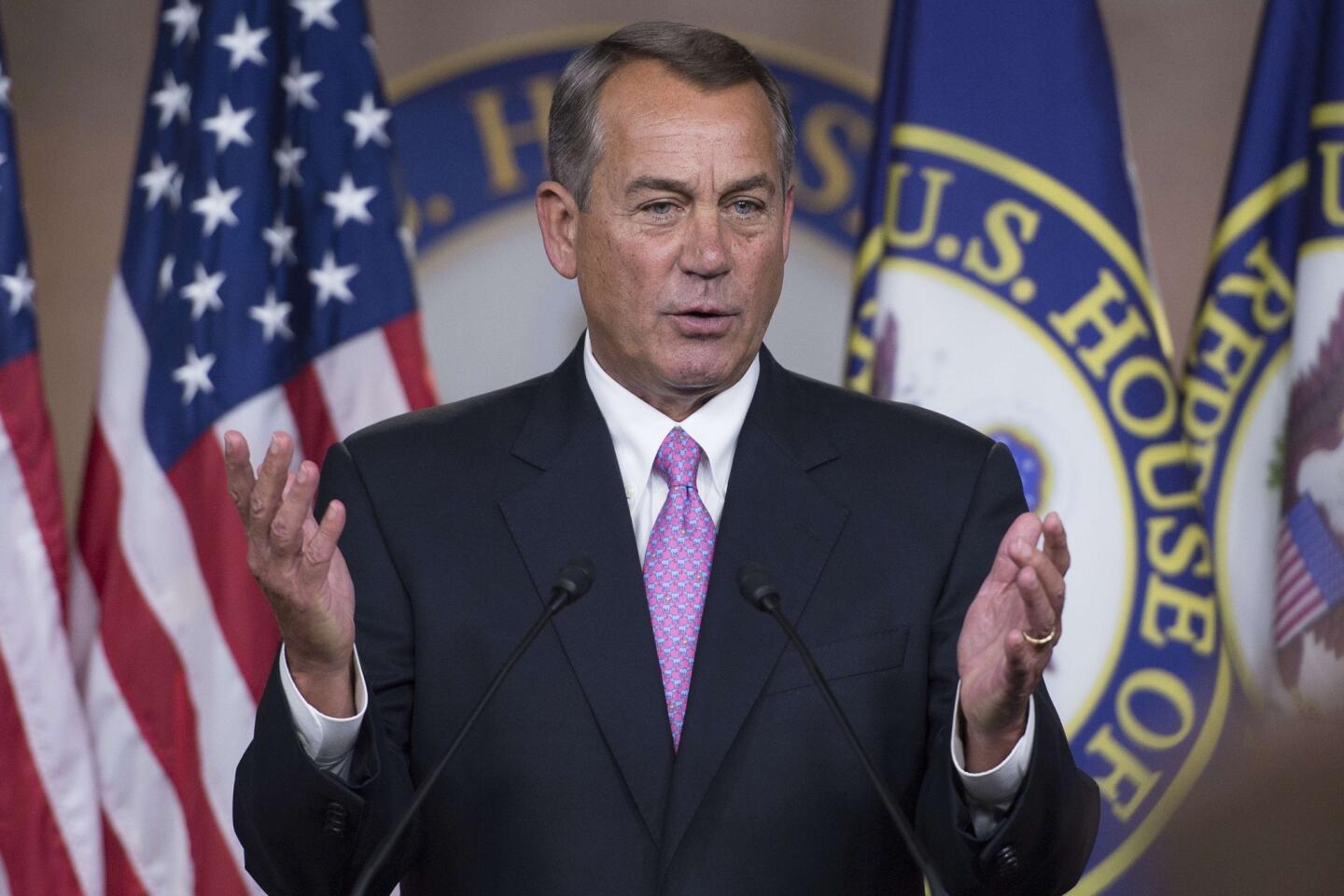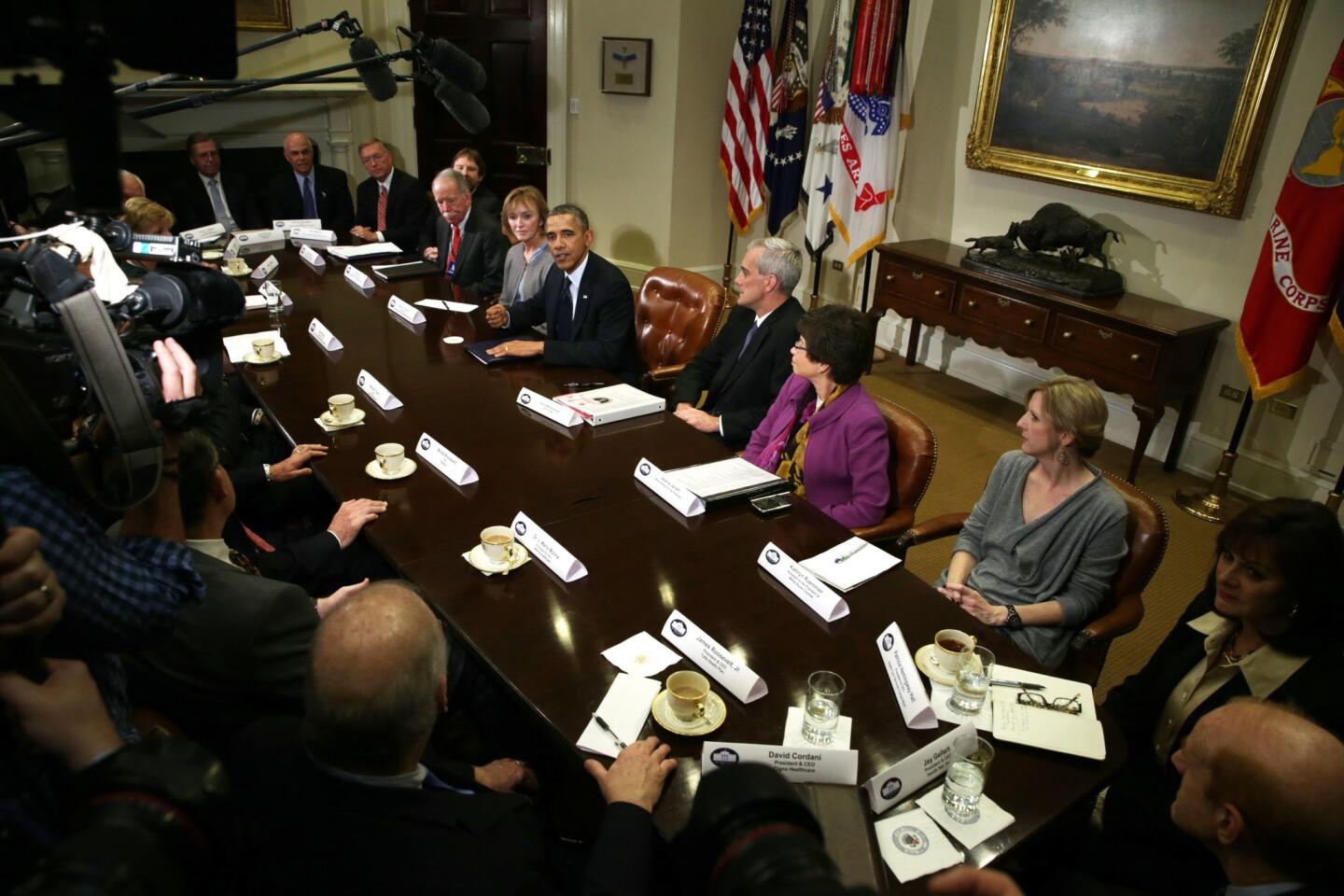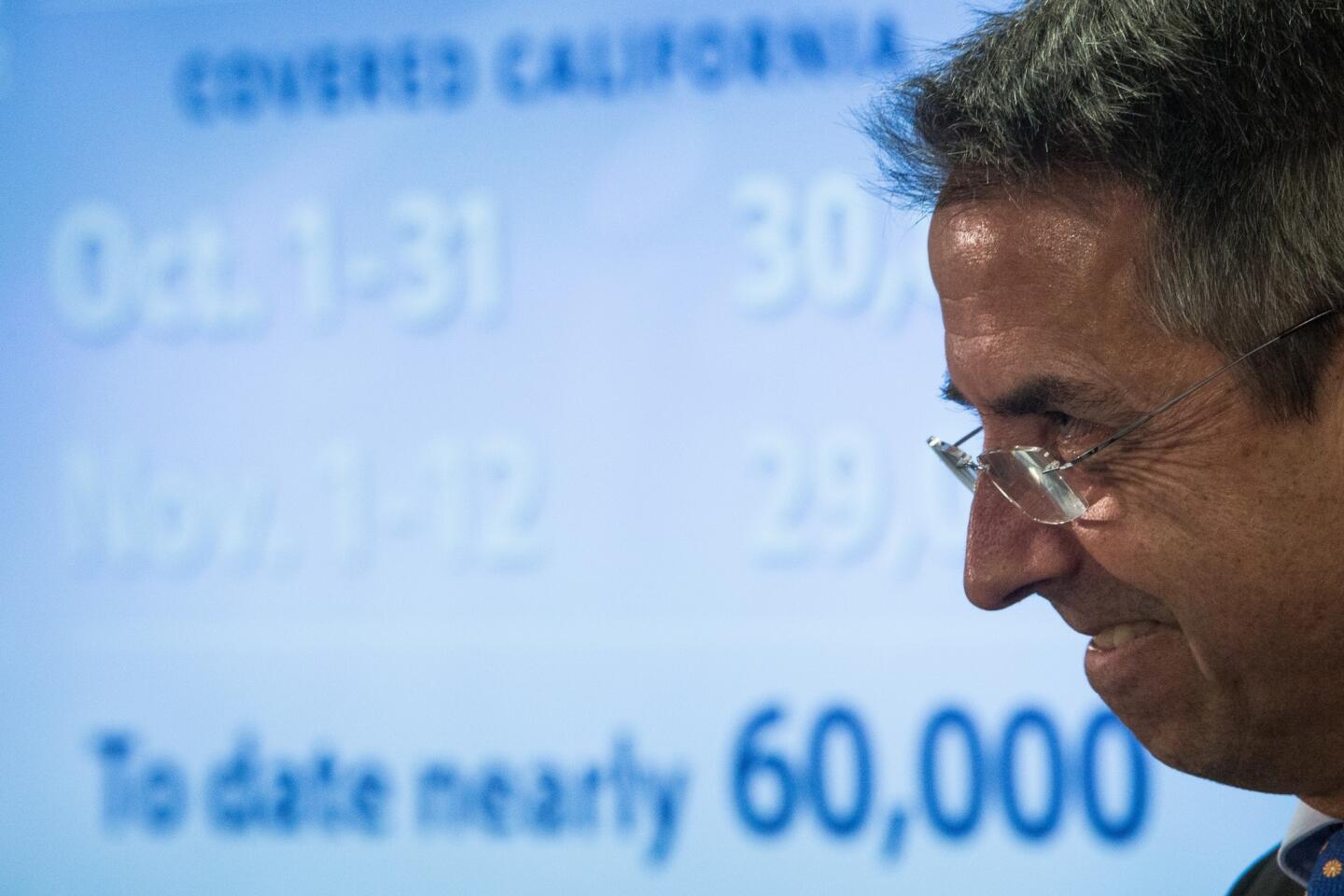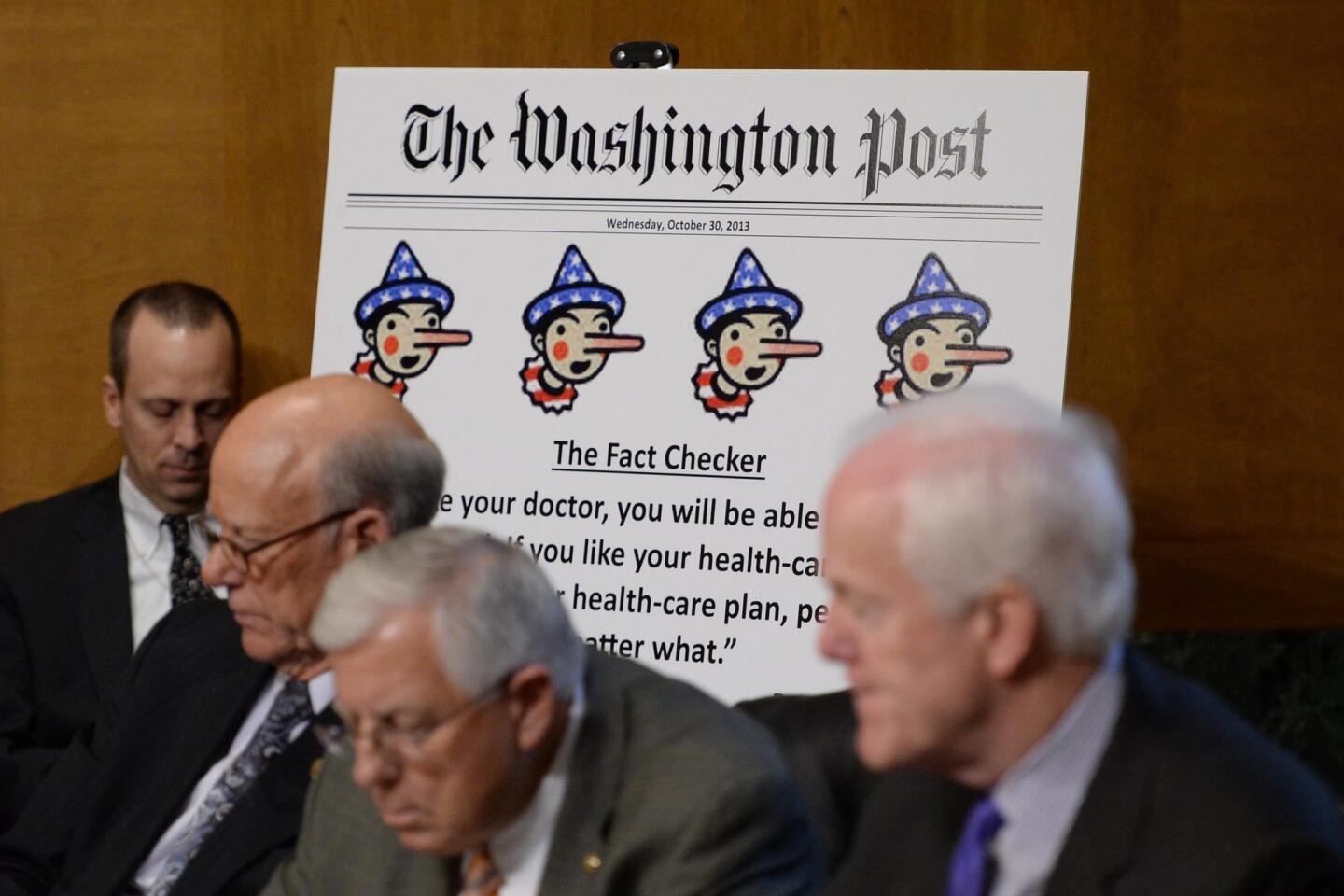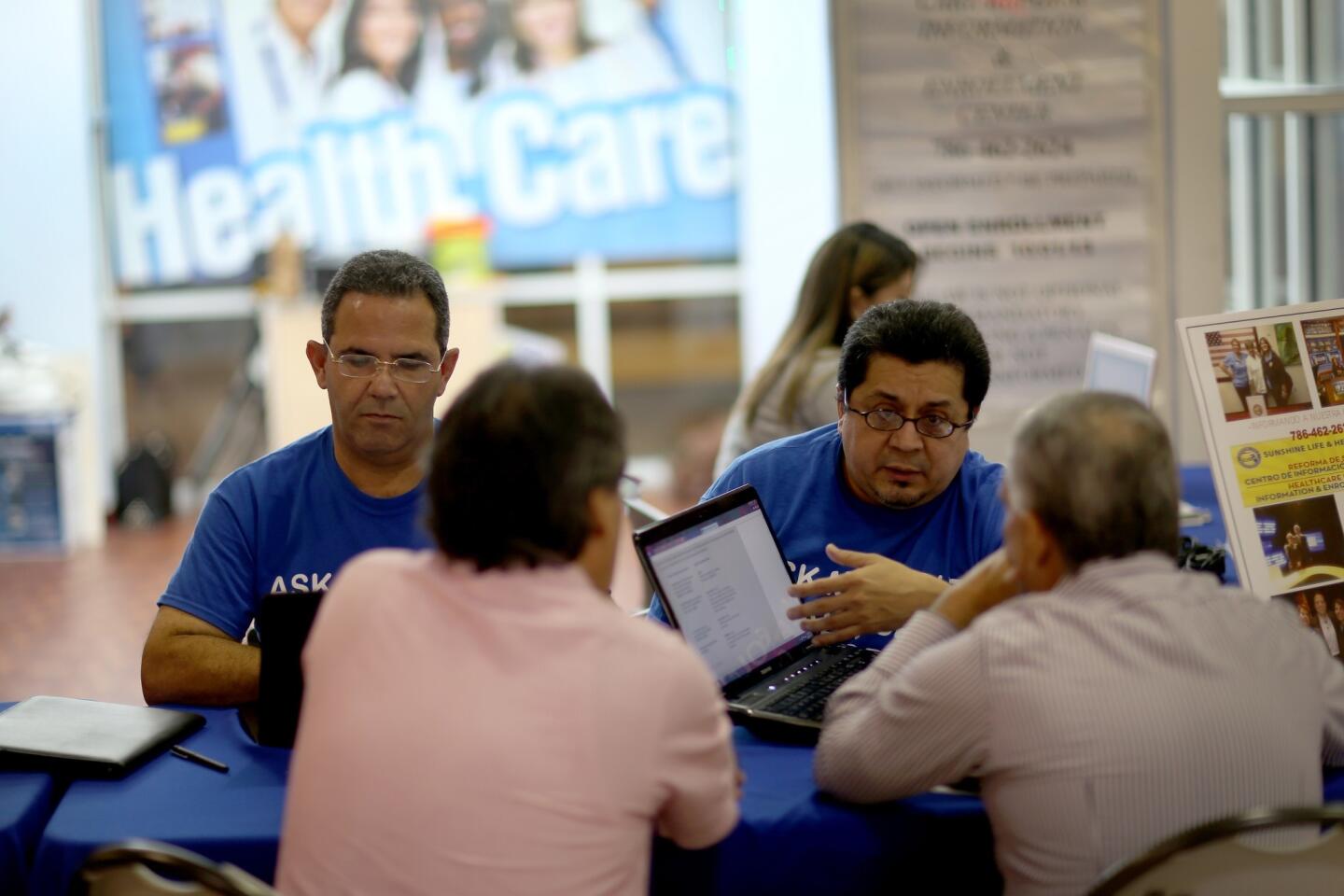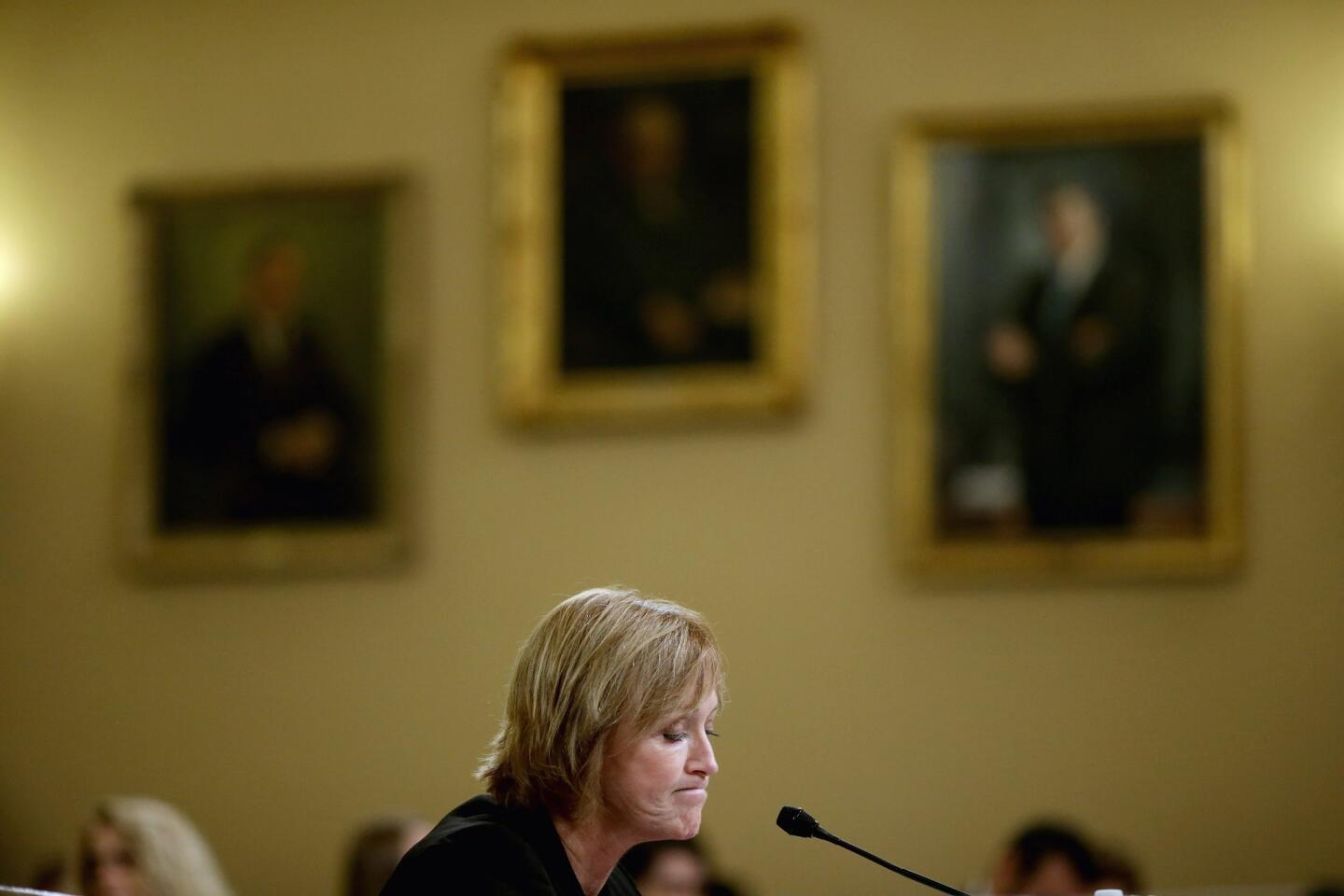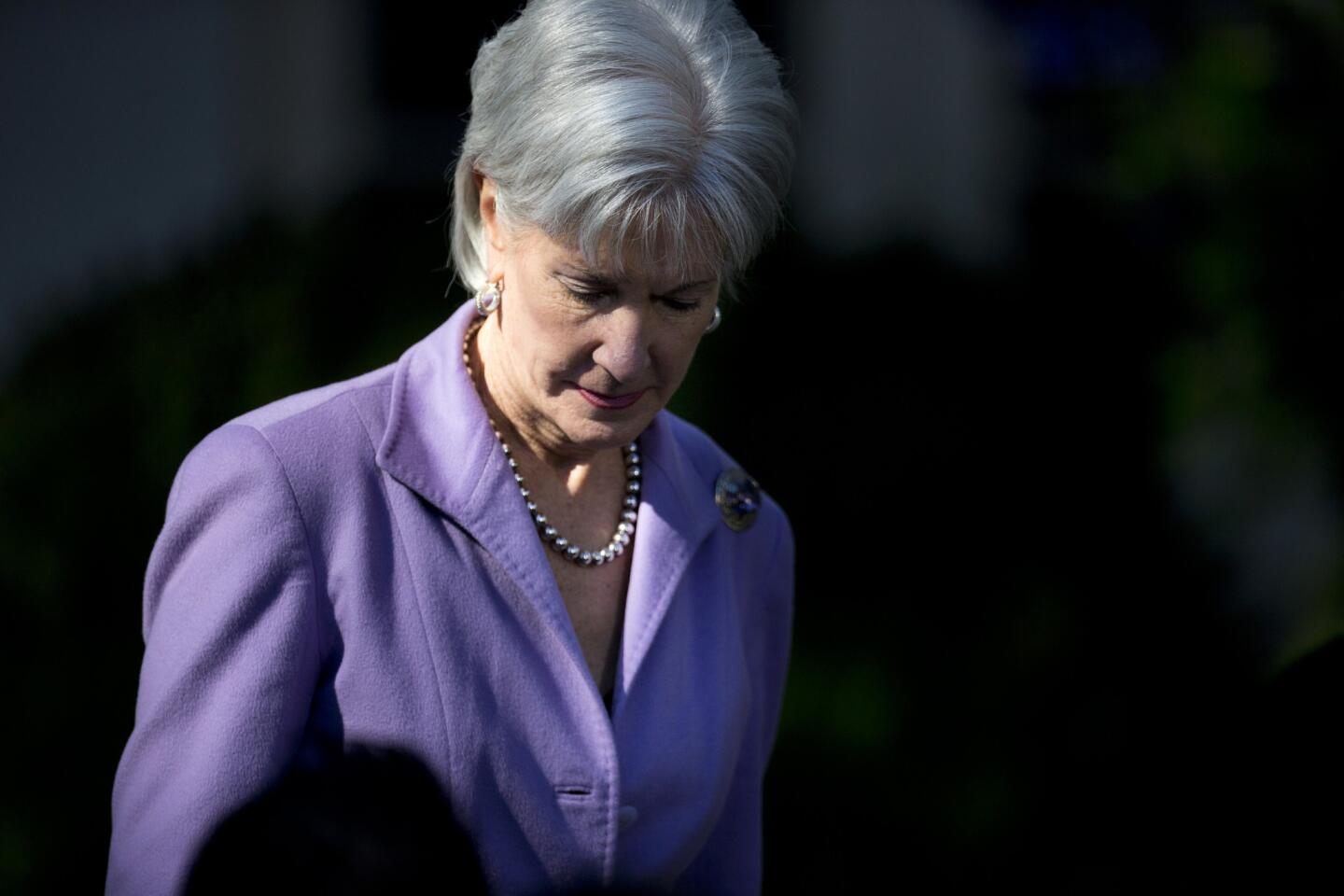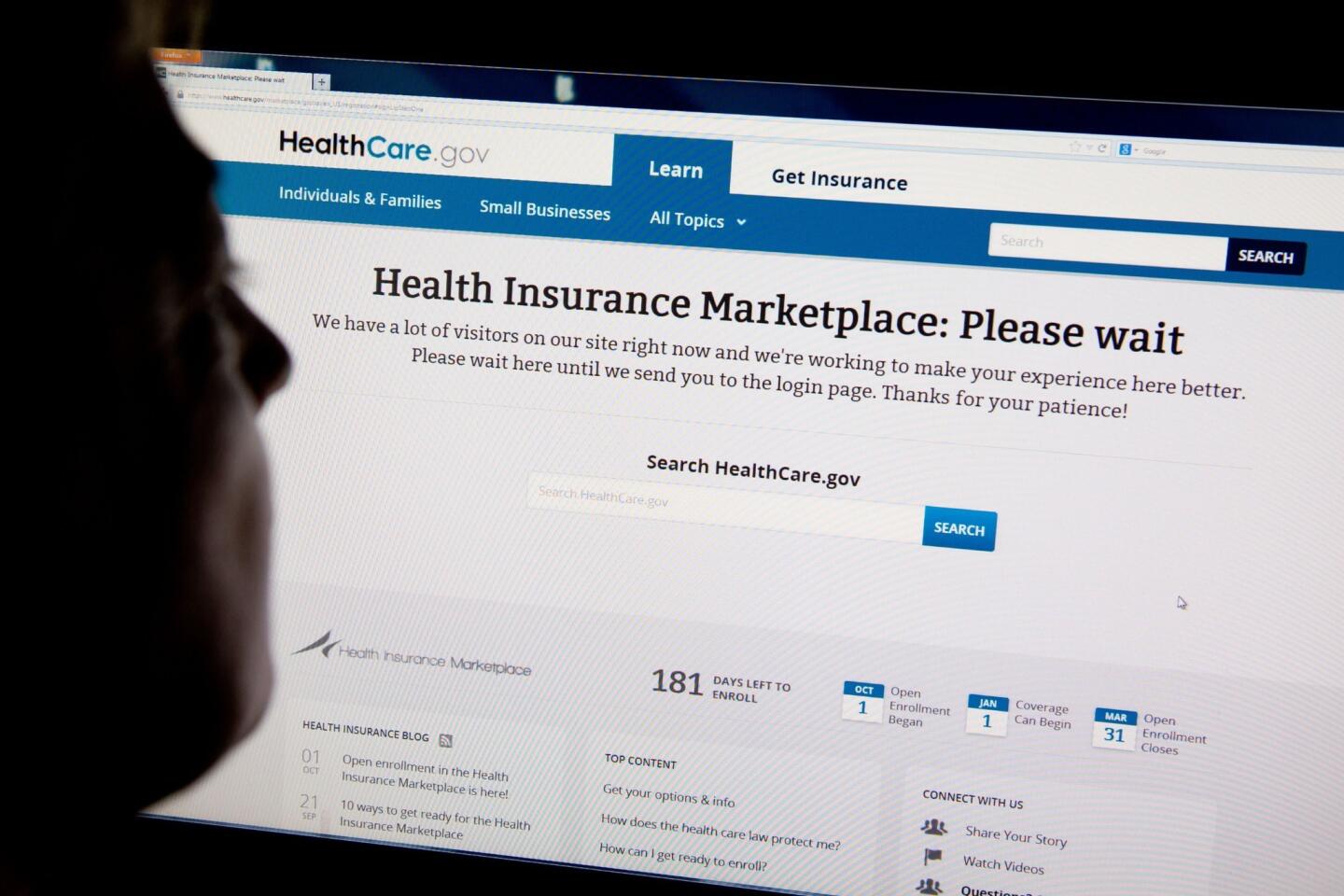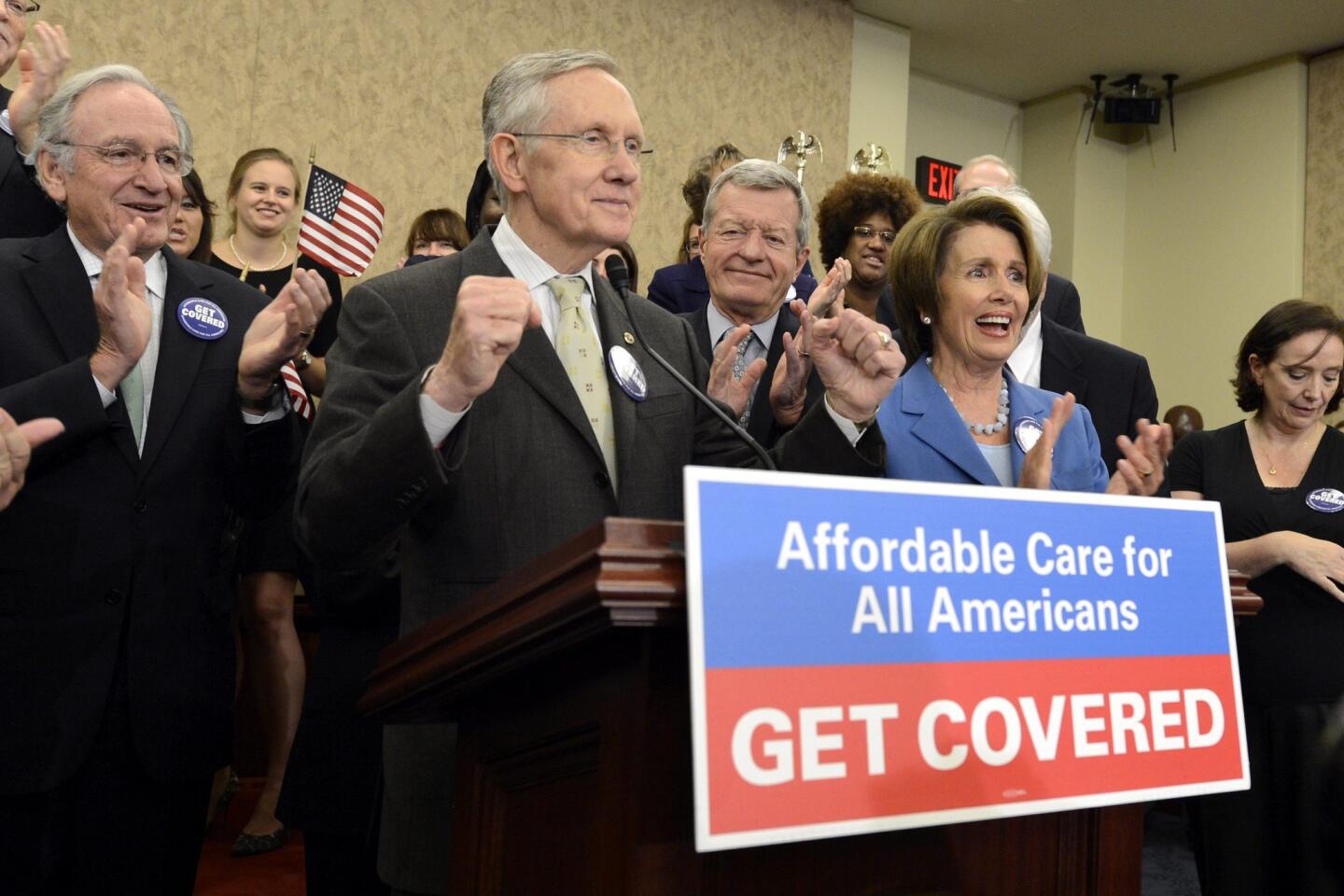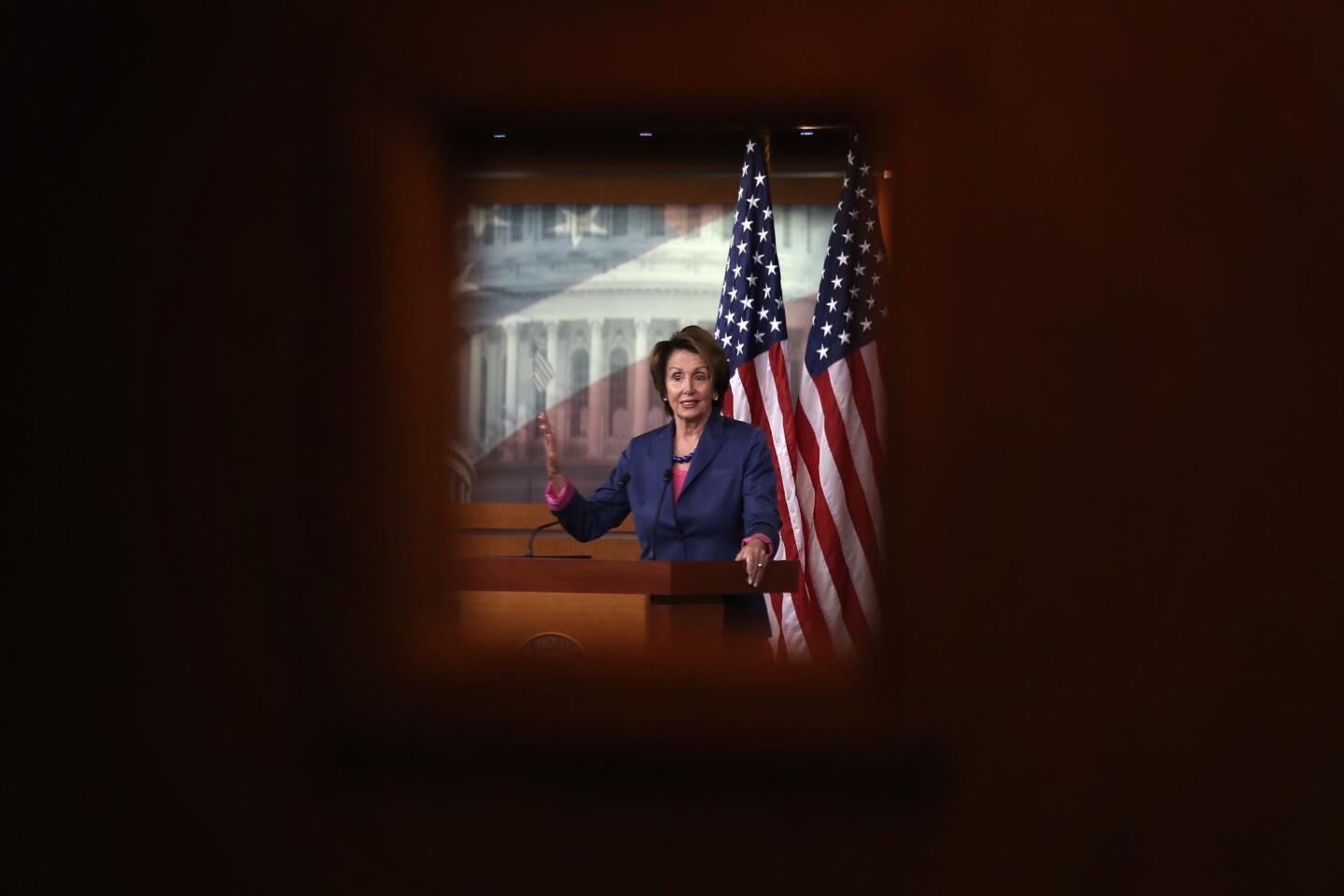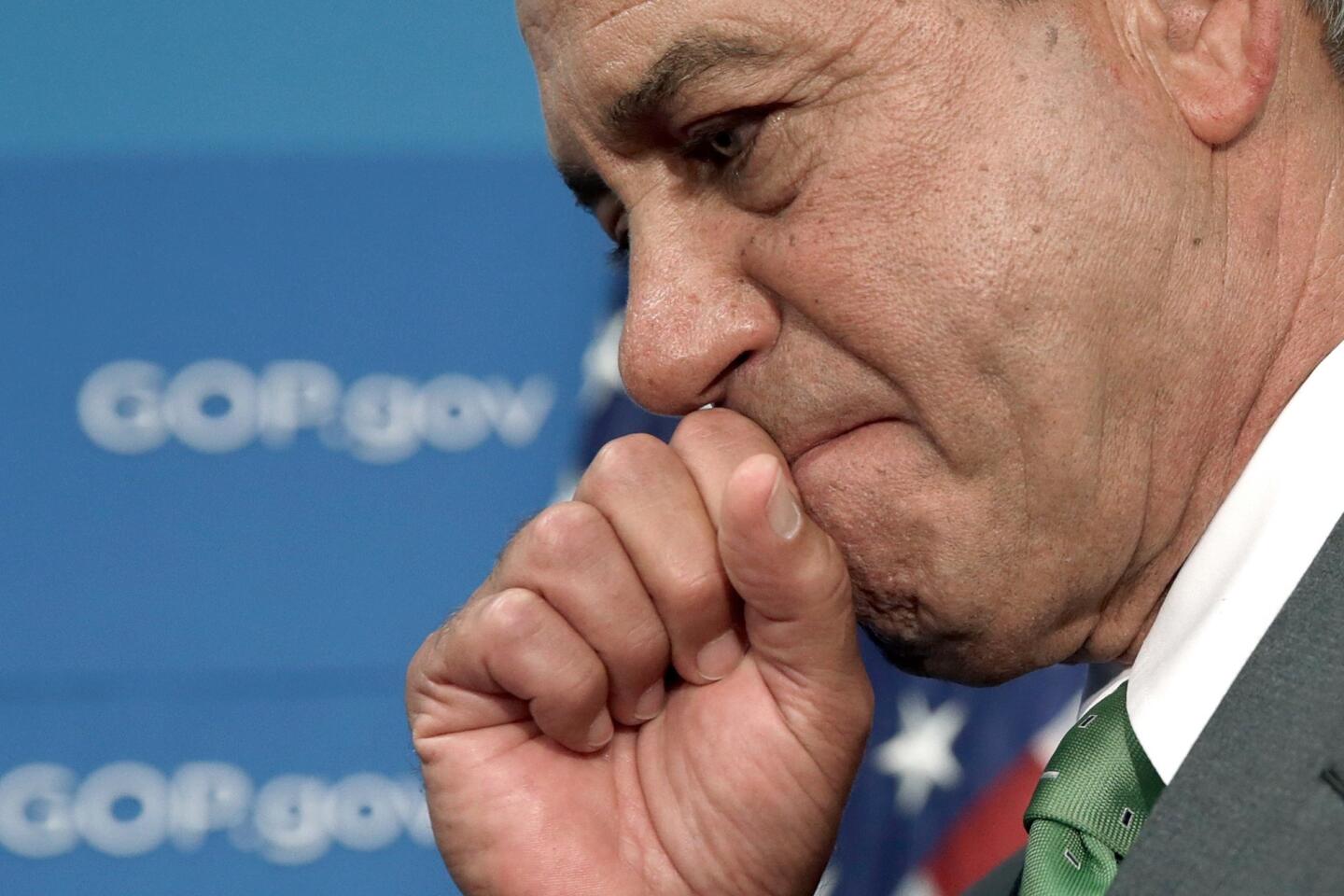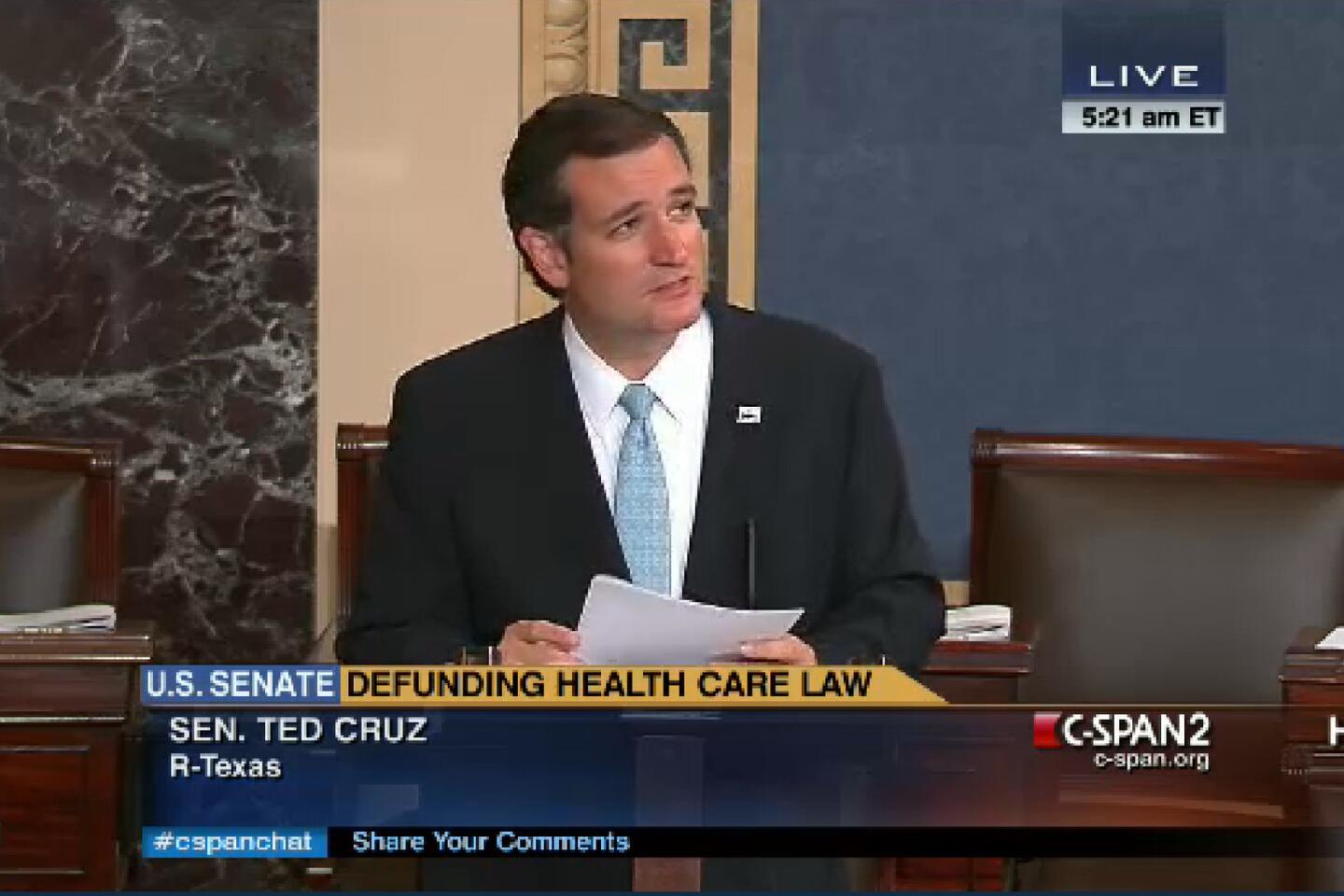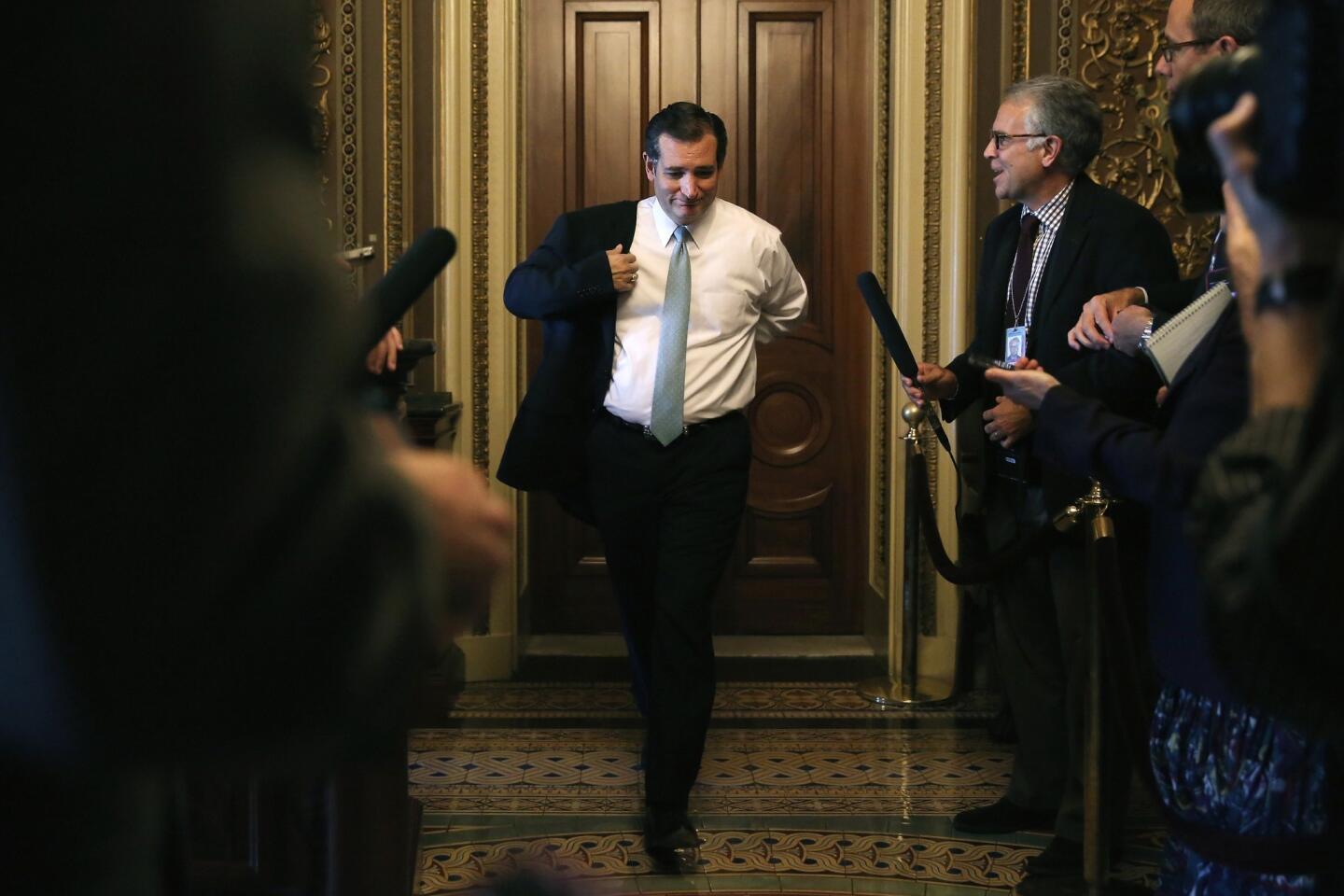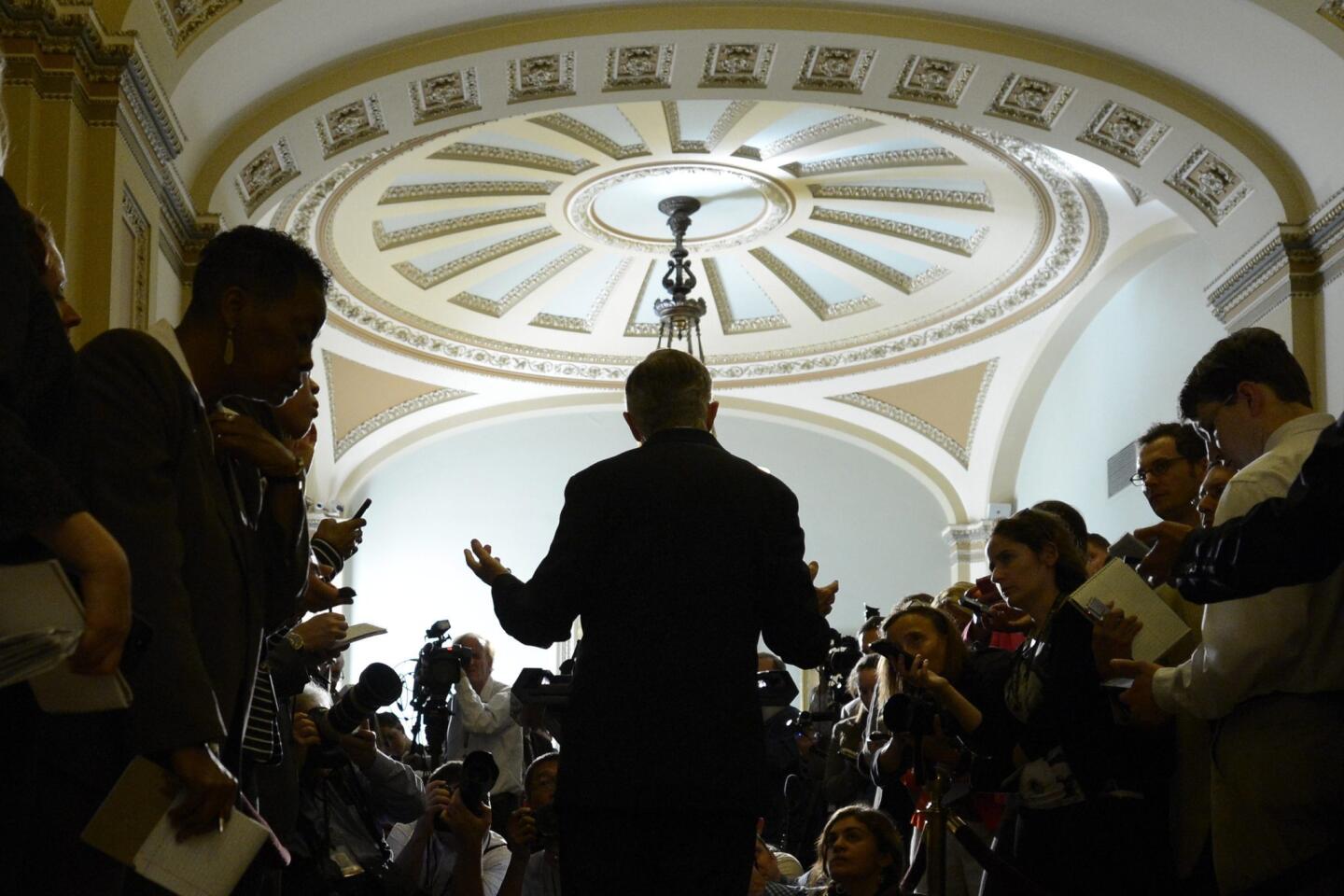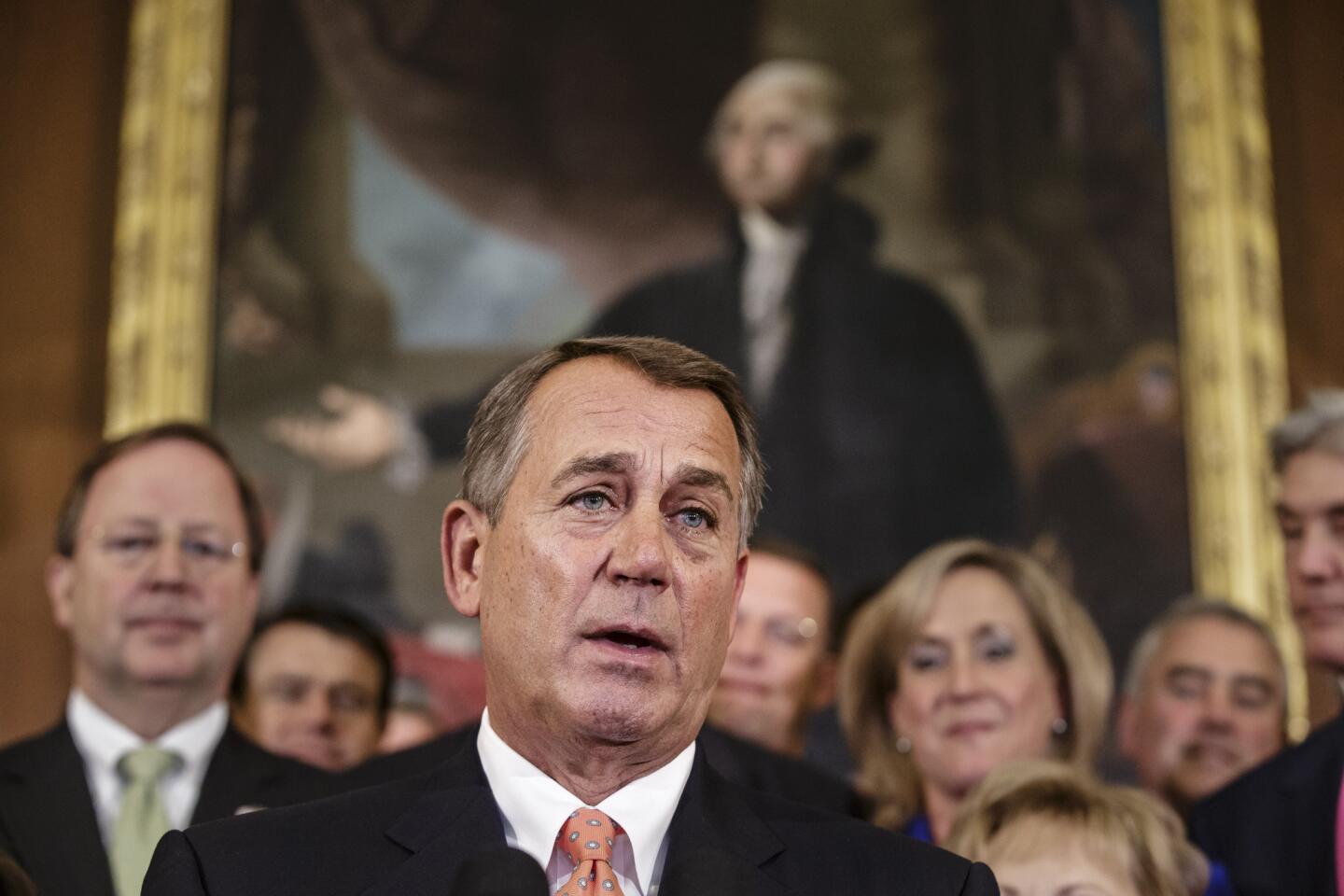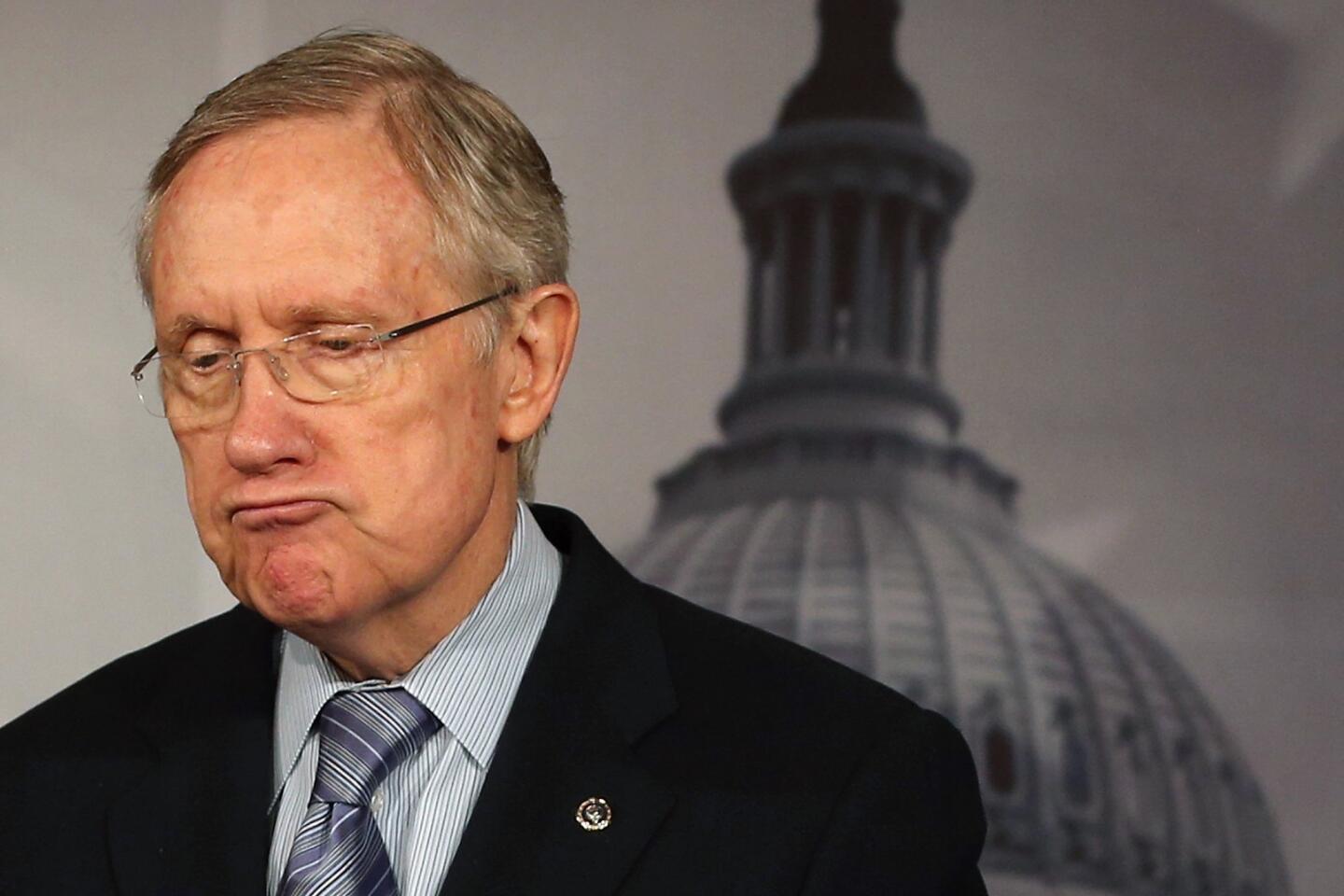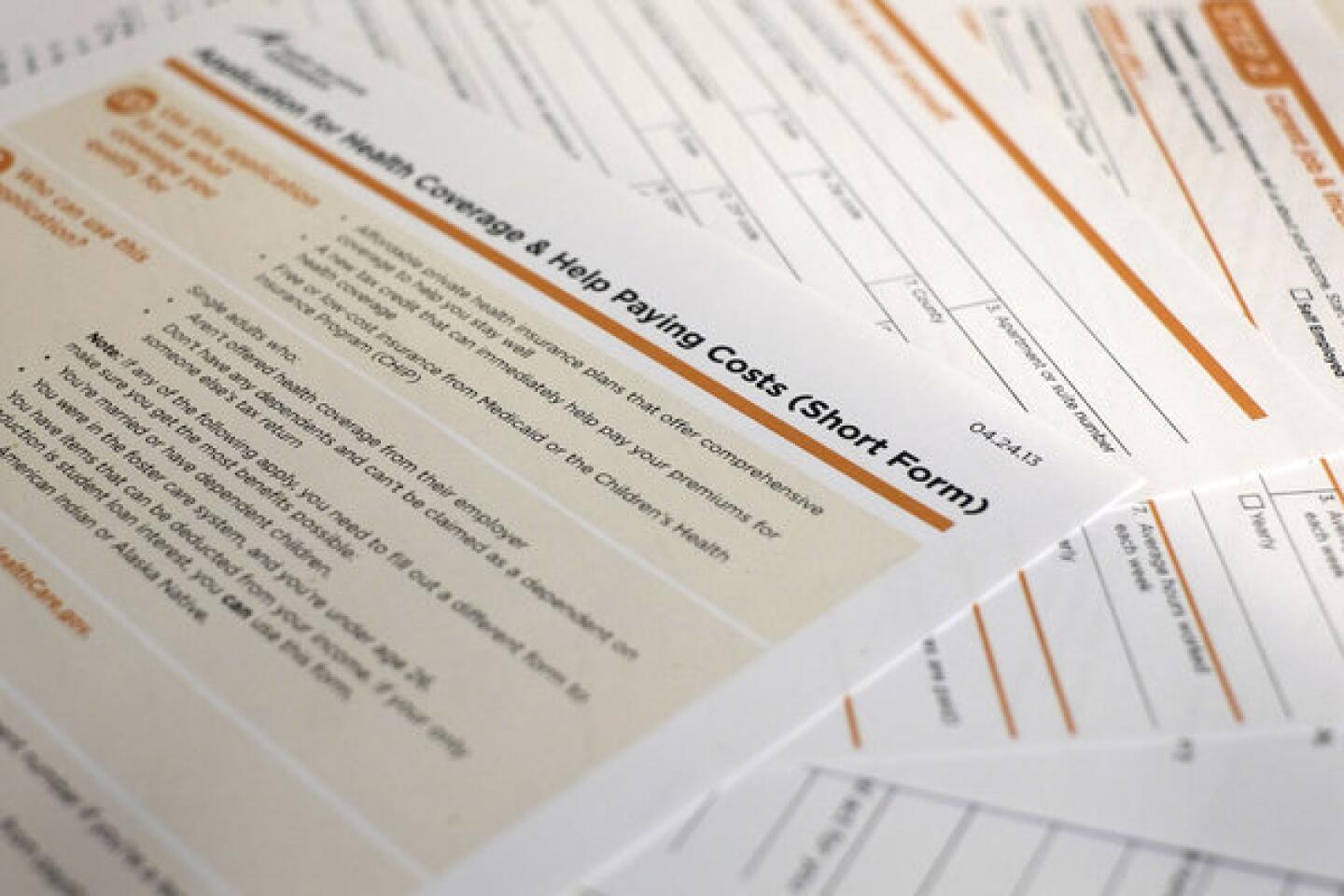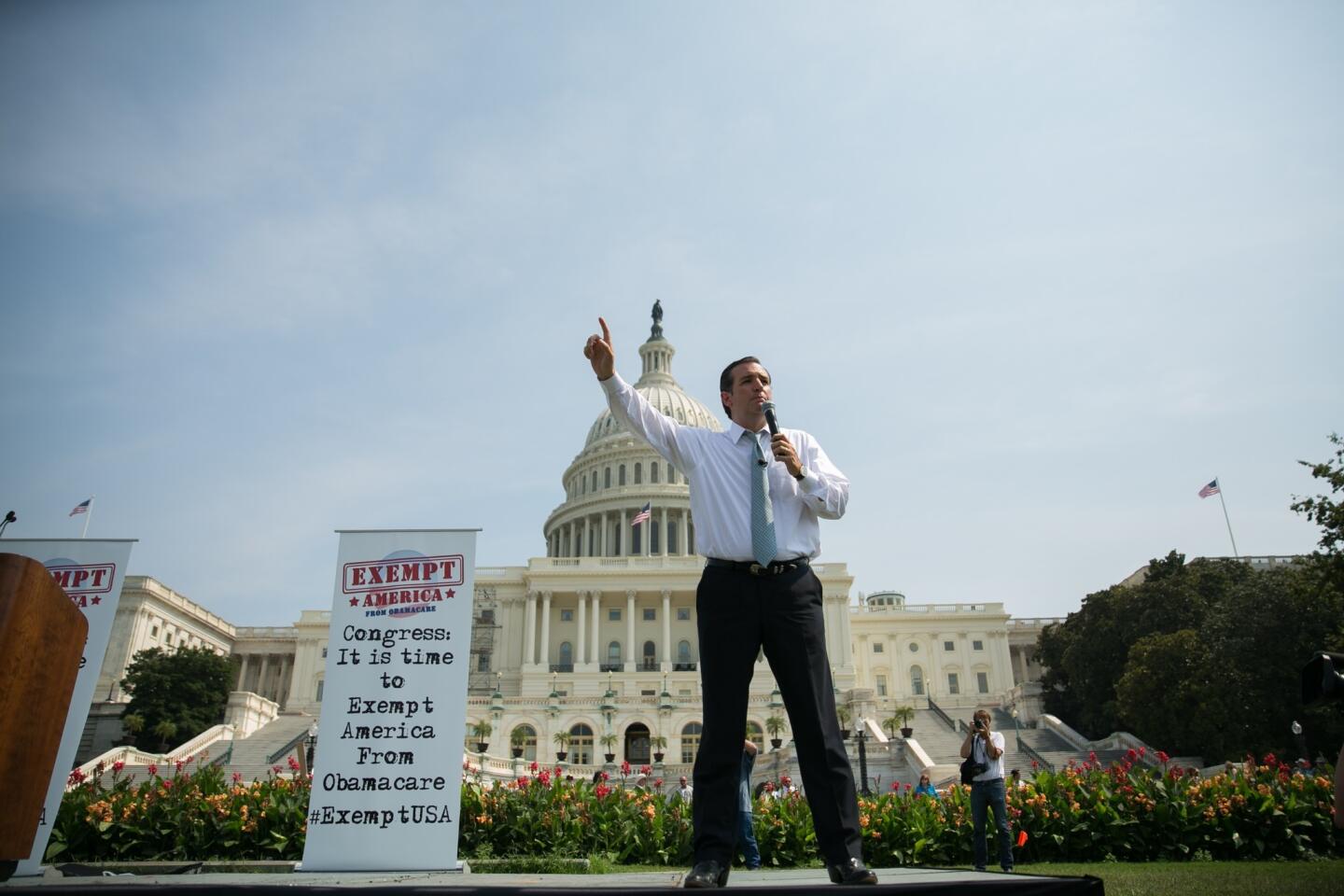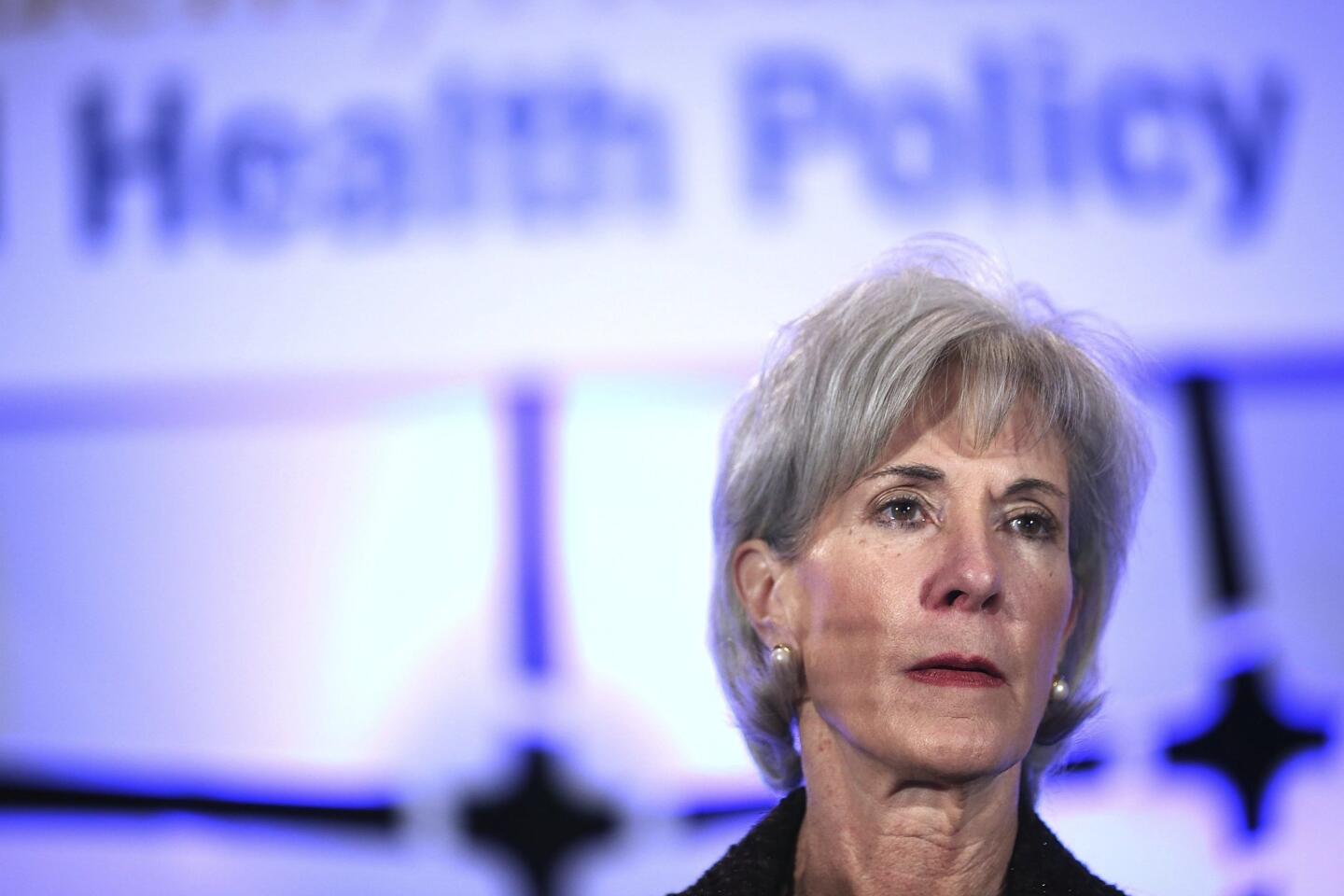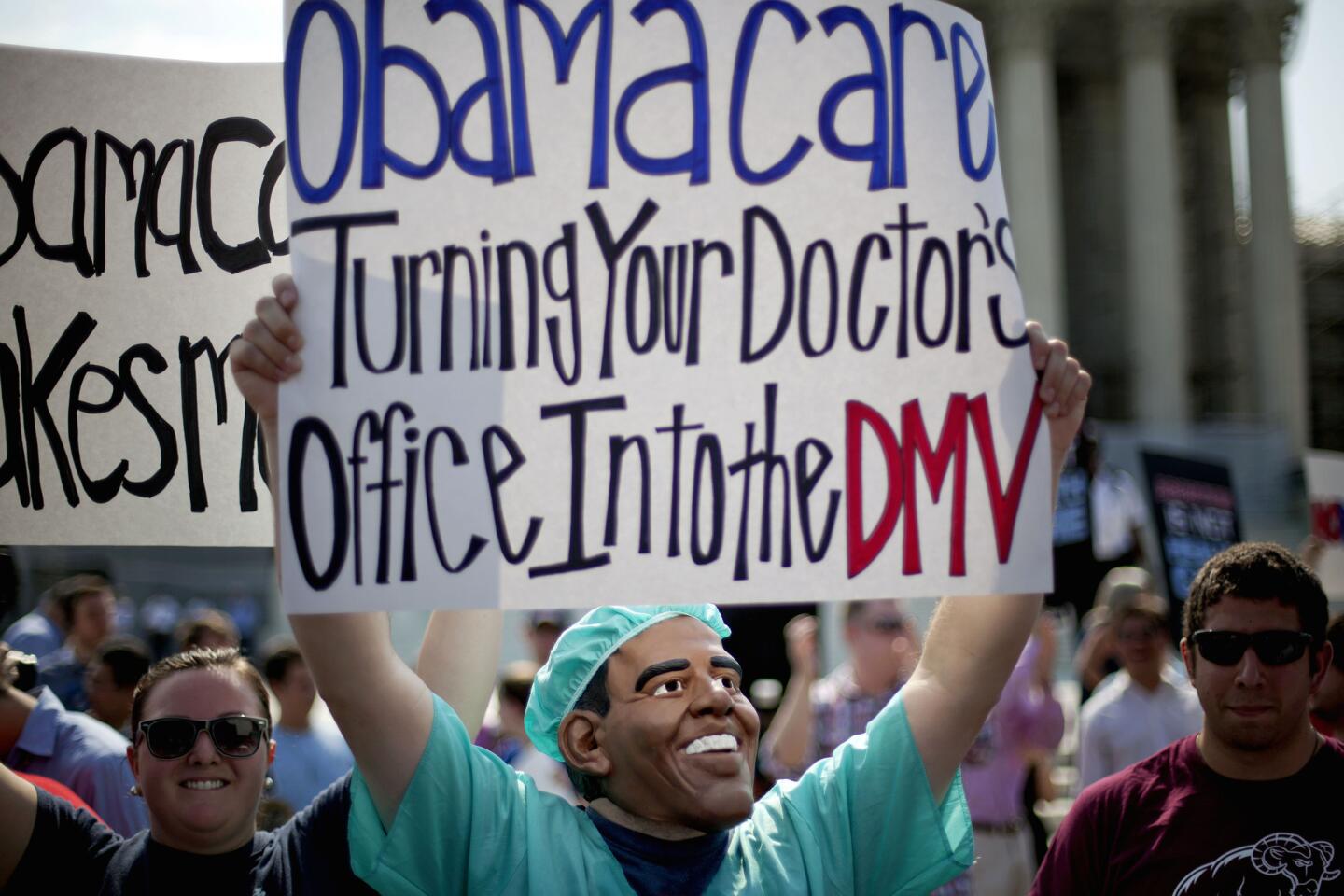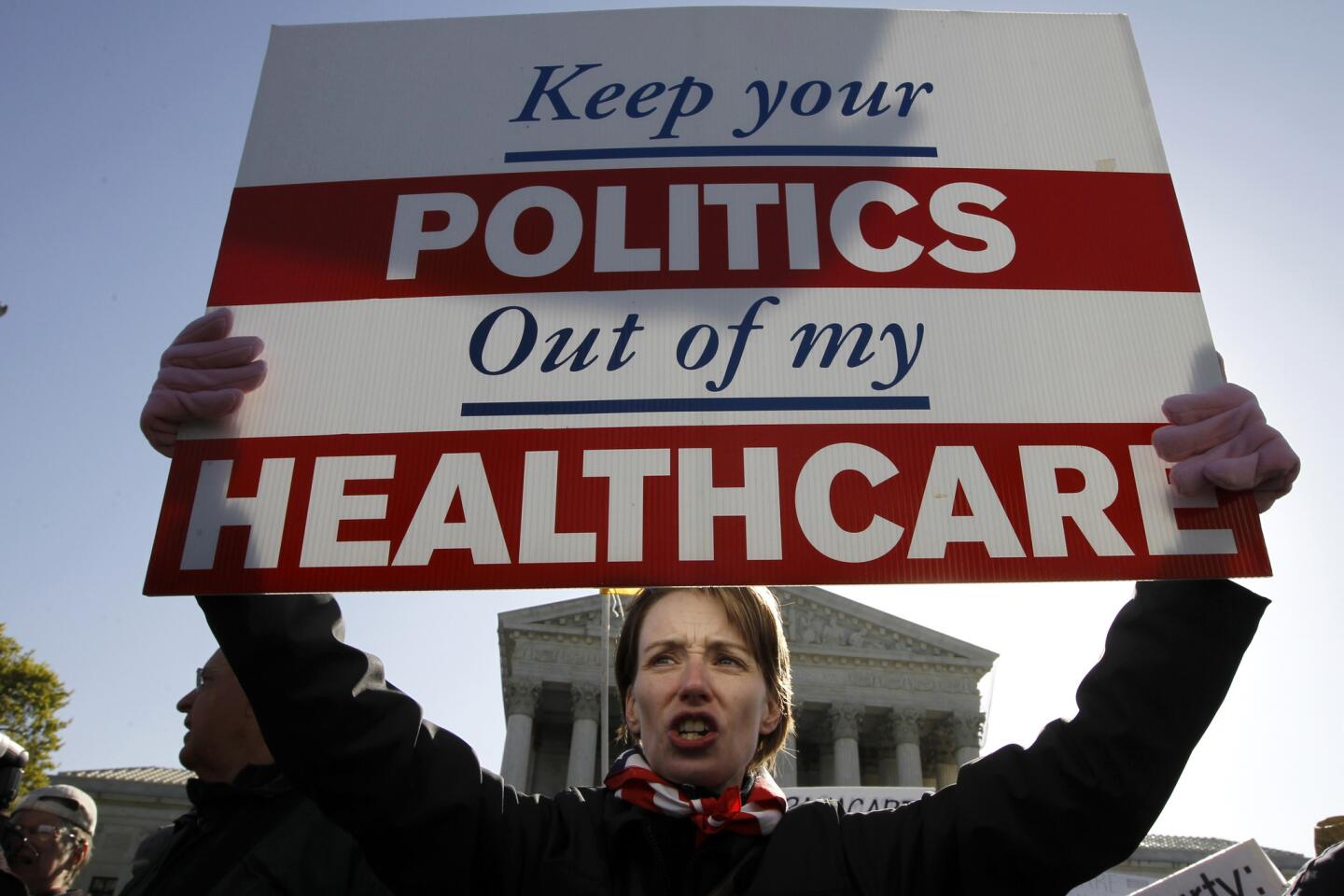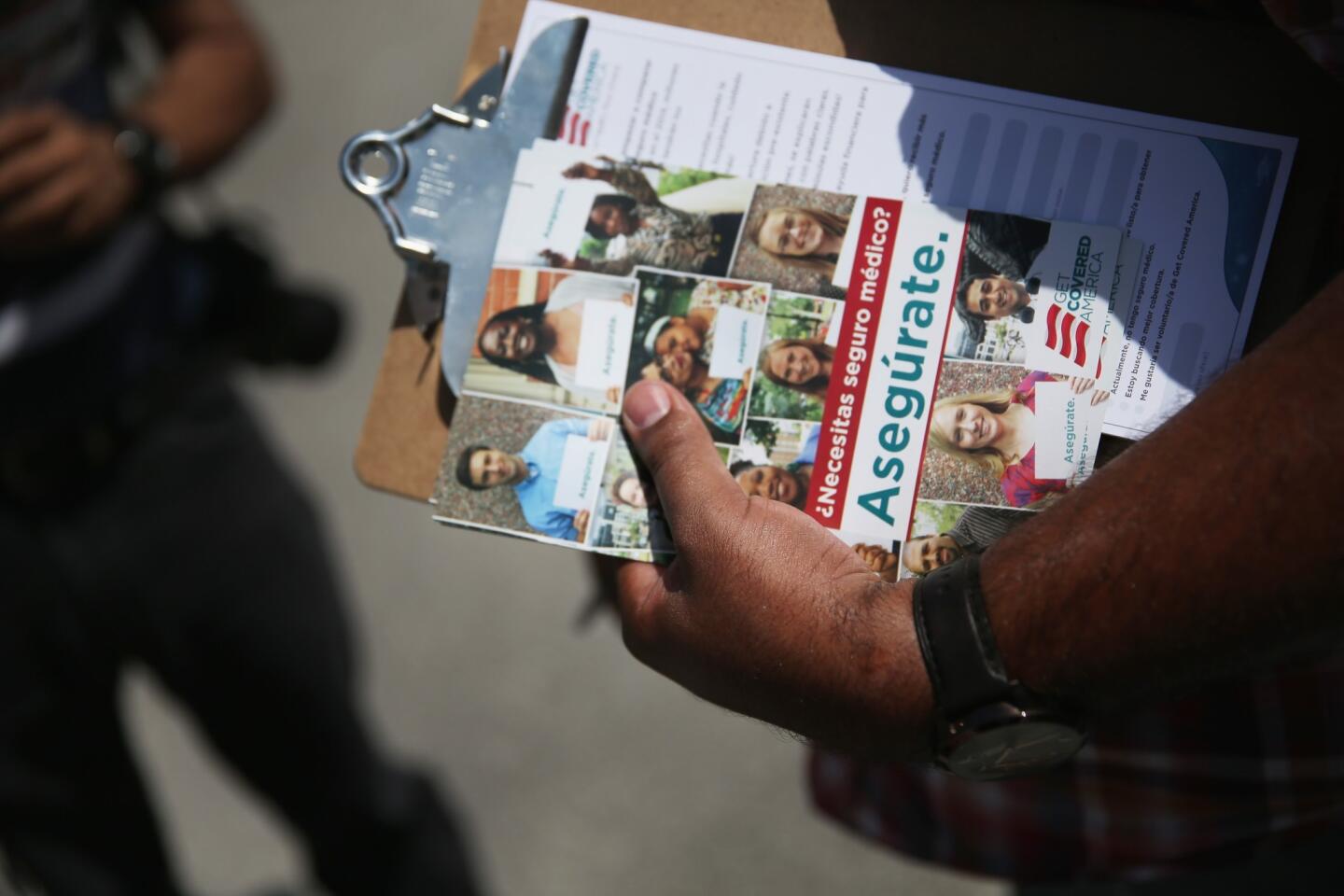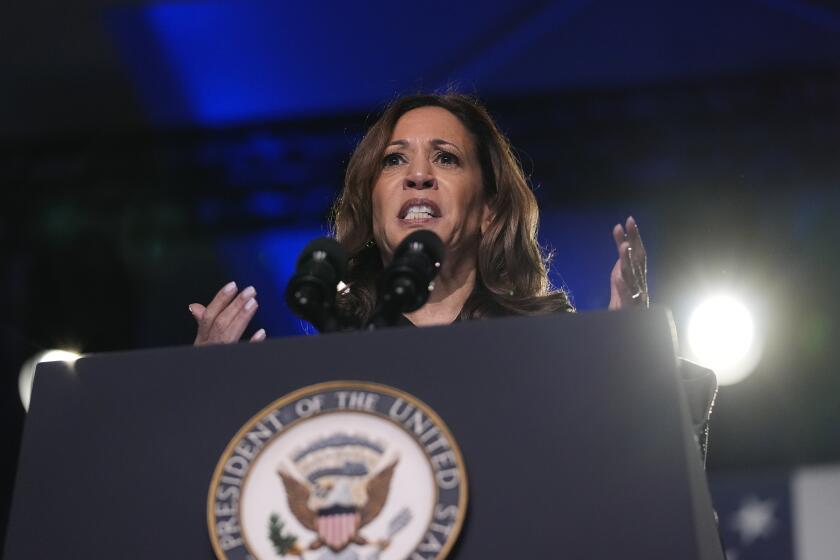Healthcare law: White House shifts from selling to explaining
WASHINGTON -- In the years since the Affordable Care Act became law, the measure known as Obamacare has been debated, excoriated, legally challenged, upheld and then debated some more.
Now, with its centerpiece element opening for business in five days, the White House is focusing on a task that many critics of the administration say is long overdue: explaining it.
Explaining was Priority No. 1 for the Obama administration during much of the week, with everyone from the commander in chief to the rank-and-file press staff setting out details for reporters.
Today, the effort will continue as President Obama is set to deliver a speech at a community college in Largo, Md., with the goal of convincing young, uninsured Americans -- a crucial demographic -- that the new healthcare “exchanges” can provide insurance coverage that fits their budgets.
The exchanges will open for business Tuesday. People who do not have insurance will have an open enrollment period that lasts until March in which to review the available plans and decide whether to sign up.
Obama’s speech will be followed by a series of events in which White House and agency officials will fan out to participate in conferences, briefings and online conversations with target groups. On Wednesday, the administration touted a report offering some details on the costs of insurance plans that will soon be available on the exchanges. Officials pointed to estimates showing that for many Americans, the monthly premiums for at least some of the plans will be lower than projected.
The administration has faced considerable criticism from fellow Democrats for not selling Obamacare consistently enough in the 3 1/2 years since Obama signed it into law. White House officials have countered that until the law actually became real to consumers, such efforts would have been futile.
Speaking at a forum in New York on Tuesday, Obama acknowledged his sales pitch has shifted now that the rollout is here. He’s stopped trying to get Americans to love the law before it ramps up, he said, he just wants them to try it.
“There has been billions of dollars spent making people scared and worried about this stuff,” Obama said at the event hosted by former President Clinton. “And rather than trying to disabuse people of every single bit of misinformation that’s been out there, what we’re saying is just look for yourself. Take a look at it and you will discover that this is a good deal for you.”
Obama and White House officials have their work cut out for them. Polling shows even uninsured Americans, the primary target for the law’s new exchanges, are wary. A Pew Research survey conducted last week found the uninsured as likely to disapprove of the law as they are to approve of it, with about one-third of those without insurance saying they think the law will have a negative effect on them. Only half of the uninsured surveyed knew the law offered subsidies to bring down the out-of-pocket cost of insurance.
The architects of the sales campaign are putting a lot of stock in the online sign-up process. In a preview Wednesday, White House Deputy Senior Advisor David Simas showed 40 regional newspaper reporters how the online “experience” works, as users answer questions about their age and income and then find a range of plans for which they are eligible.
After a few clicks in the demonstration, a user could select from plans ranging in level from “bronze” to “platinum,” then compare the cost of premiums, the plan details and the providers involved.
“Right now,” before the new law takes effect, “there is no way to see how different plans work for your family,” Simas said. “These marketplaces will change that.”
The administration has invested untold time and money into trying to make sure those online prompts work, knowing that one bad or glitchy experience can turn off a potential customer and create a talking point for the law’s opponents.
The government has been training proxies at community centers, clinics and hospitals to guide people through the process. Officials will staff 24-hour call centers with operators who can tap into the online prompts of a caller and walk a person through any problems.
Medicare call centers already handle 28 million calls for customer service, Simas said, asserting that the agencies “know how to do this.”
Even the looming government shutdown, which could start Tuesday, won’t threaten the rollout of the president’s signature plan, Simas said. Key workers have been designated “core and essential” and thus will continue to work when other government employees are furloughed.
Still, the White House was braced for bumps in the road and was trying to lower expectations accordingly.
“News flash: There will be glitches,” Simas said with a laugh Wednesday. “This is not a six-day open enrollment. This is not a six-week open enrollment. This is a six-month open enrollment.”
That’s good for the White House, which has been distracted by crises abroad and faces a budget showdown with Republicans in Congress. With much of the Washington press corps focused on the potential for a government shutdown, the White House message operation has reached out directly to local news outlets this week.
Proud of the first round of results, Press Secretary Jay Carney on Wednesday bragged about the headlines in local newspapers, including in Pittsburgh, Dallas, Detroit, Palm Beach, Fla., and Appleton, Wis. More affordable health insurance was the “the design and the promise of the Affordable Care Act, and it’s taking shape before our eyes,” he said.
Twitter: @cparsons
kathleen.hennessey@latimes.com
Twitter: @khennessey
More to Read
Sign up for Essential California
The most important California stories and recommendations in your inbox every morning.
You may occasionally receive promotional content from the Los Angeles Times.
